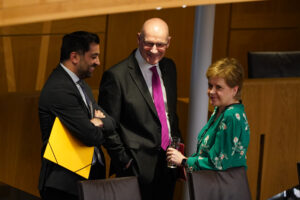
Wrapping up a policy-light SNP conference, John Swinney’s only big announcement was the creation of a network of 15 walk-in GP centres.
His next trip was to a health centre, but not one run by the Scottish NHS.
The first minister was straight on a plane to Zambia, where his next public appearance was at a Scottish government-funded child’s operating centre, some 5,300 miles from home.
A stickler for the rules, a hair net adorned Swinney’s smooth head. It took the first minister, after what his allies believe was a largely successful three-days in Aberdeen, out of the domestic limelight.
He is to spend six days in sub-Saharan Africa, an unusually long first ministerial overseas trip, to mark the 20-year anniversary of Holyrood’s overseas aid programme.
Having moved on to Malawi on Friday, Swinney will not return to Scotland until Monday.
“We are boring our way to victory, but we just have to grit our teeth and get there,” said one leading party figure, dismayed at the lack of bold initiatives at the conference. The annual showpiece for the party, they said, had been an “ideas free zone”.
There are some internal jitters there may be credibility to opposition claims that the nationalist policy cupboard, after nearly two decades in power, is now bare.
Figures close to Swinney insist the attacks are unfair. They claim the dearth of policy announcements at conference, where the party had nothing new to say on devolved issues such as policing or education, was a tactical decision.
For now, the SNP is content to leave political stage to Labour. Exactly 200 days out from the Scottish elections, the only party with any hope of beating the SNP is braced for a budget next month in which Rachel Reeves is expected to have to announce a fresh combination of painful tax rises and spending cuts.
“Is the budget going to be a good or bad news story for Labour?” one leading SNP figure close to Swinney asks. “Why interrupt the Labour Party when they are making mistake after mistake? They have been jaw-droppingly terrible, and voters feel misled.”
A party united?
Swinney believes, after a conference where his independence strategy was overwhelmingly endorsed, that he has a genuinely united party, for the first time since sexual misconduct claims against Alex Salmond erupted more than seven years ago.
While a succession of members took pot shots at his plan, which is to insist that an outright majority in Holyrood will finally deliver the fresh referendum his activists crave, none of them were elected figures with public profiles.
One rebel addressed the conference in a Star Wars T-shirt, making a bizarre analogy linking the quest for a new referendum to the African American athlete Jesse Owens winning gold at the Nazi-run 1936 Berlin Olympic Games. Other Swinney critics spoke of “provisional governments” and the Battle of Bannockburn.
The days when a substantial figure such as Joanna Cherry, the KC and former MP, could have been expected to line up behind the rebels are gone.
The matter of independence strategy, another open sore since Theresa May first uttered the words “now is not the time” in 2017, has also been settled, at least for now.
The first minister, aides claim, is now ready to move to the final part of a three-step plan.
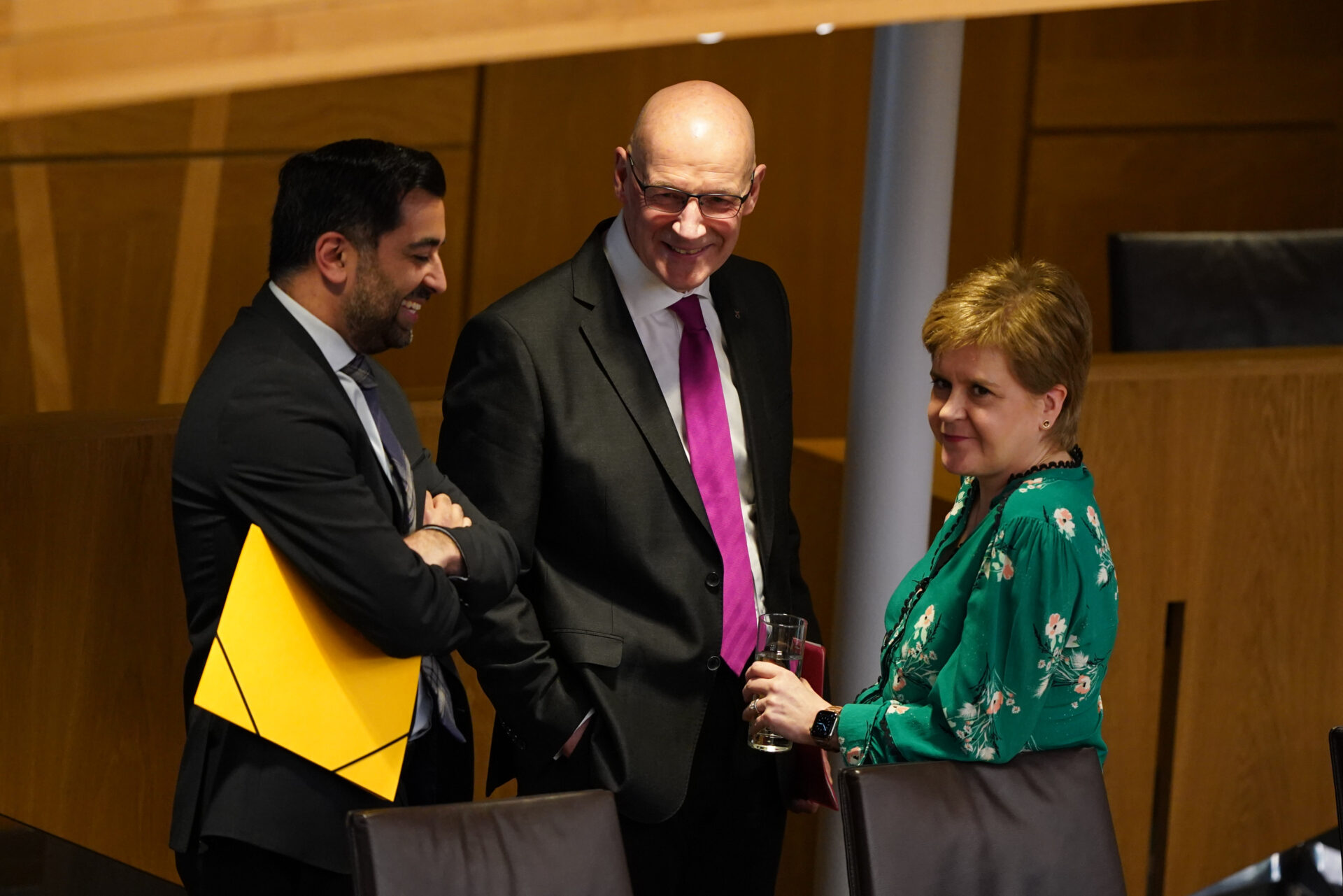
Swinney with his two predecessors Humza Yousaf and Nicola Sturgeon
ANDREW MILLIGAN/PA
The revival plan
When he took over from Humza Yousaf 17 months ago, the first phase of the strategy was to “stop digging”, to “stop doing things that are doing us harm”.
Insiders now concede the party came “perilously close” to a point of no return, after a series of scandals and policy missteps, during which voters became so disillusioned they simply stopped listening.
But a series of controversial policies have been ditched and a hostile position towards oil and gas has softened. Swinney believes he has dragged the party back to the centre ground.
Phase two was to “get back to delivery”.
The SNP’s opponents will point to turmoil in the NHS, a mass early release of prisoners from next month and a violence epidemic in classrooms as evidence this has not happened.
Swinney’s team acknowledges voters are still irked by the state of public services, but believes they are open to giving the first minister time to turn things around.
The SNP views the scrapping of peak rail fares in September as a big success, which makes a marked improvements to voters’ lives. The party will seek to replicate it in the months ahead.
The plan for walk-in GP centres, while it landed badly with doctors and came with scant details of how it will be delivered, is being portrayed as a sign of policies to come.
Although Swinney backed away from overhauls when he was education secretary, his allies say he is now willing to be “radical” on public service reform and move away from the “big tent consensus” approach the SNP previously embraced.
• Most Scots think SNP is failing — but will vote for it anyway
He will offer a few pre-election policy teasers before the year ends, but he is saving the substance of his platform for the spring SNP conference and manifesto launch.
Meanwhile, despite public concern about public services, the party sees some green shoots.
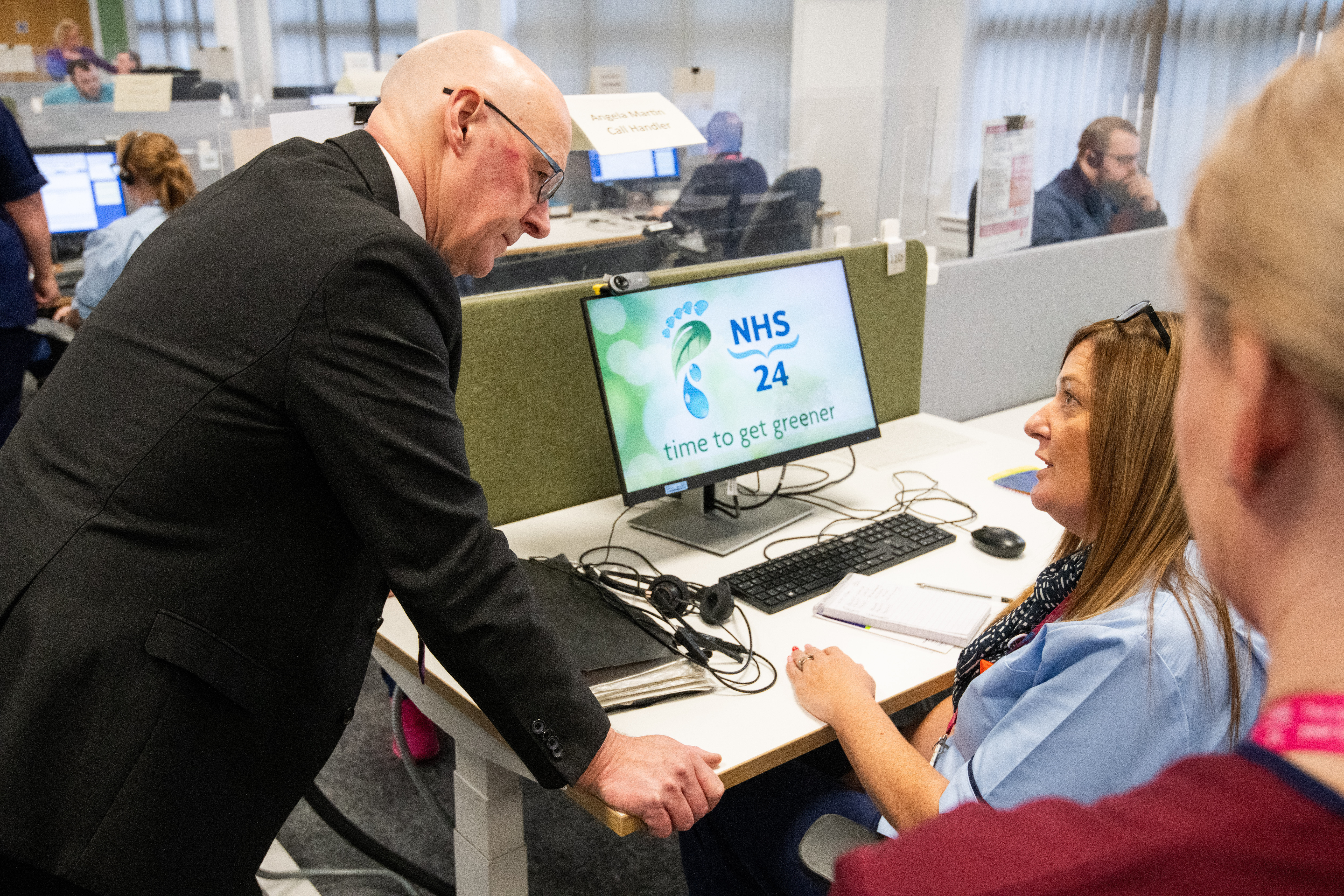
The SNP has faced criticism over its failure to reform the NHS
ALAN RICHARDSON/PA
A poll last month, which found net satisfaction with the NHS at -17, generated a slew of negative headlines for the SNP.
Members of Swinney’s inner circle, however, took heart from the fact that compared with the same poll last year, the proportion of voters who said they thought the devolved government was performing well on the NHS had risen by seven points.
There were similar improvements on the economy, education and ferries, while satisfaction with trains, after the peak rail fares policy, was up 14 points. There was decline in only two of 12 policy areas — housing and rural issues.
The third stage of Swinney’s plan is to “grab the opportunity” and deliver another thumping win in May’s Holyrood elections. The SNP will try to convince voters that the first minister deserves another five years to elevate the standard of public services.
“We have a united party now, the benefit of incumbency and a clear lead,” a senior figure close to Swinney said. “It feels like the momentum is with us.
“Sarwar is nowhere, Reform are becalmed in the teens [in recent polls] and the Tories are dead. John has put us into a position where we have a fantastic opportunity — we now need to grab it.”
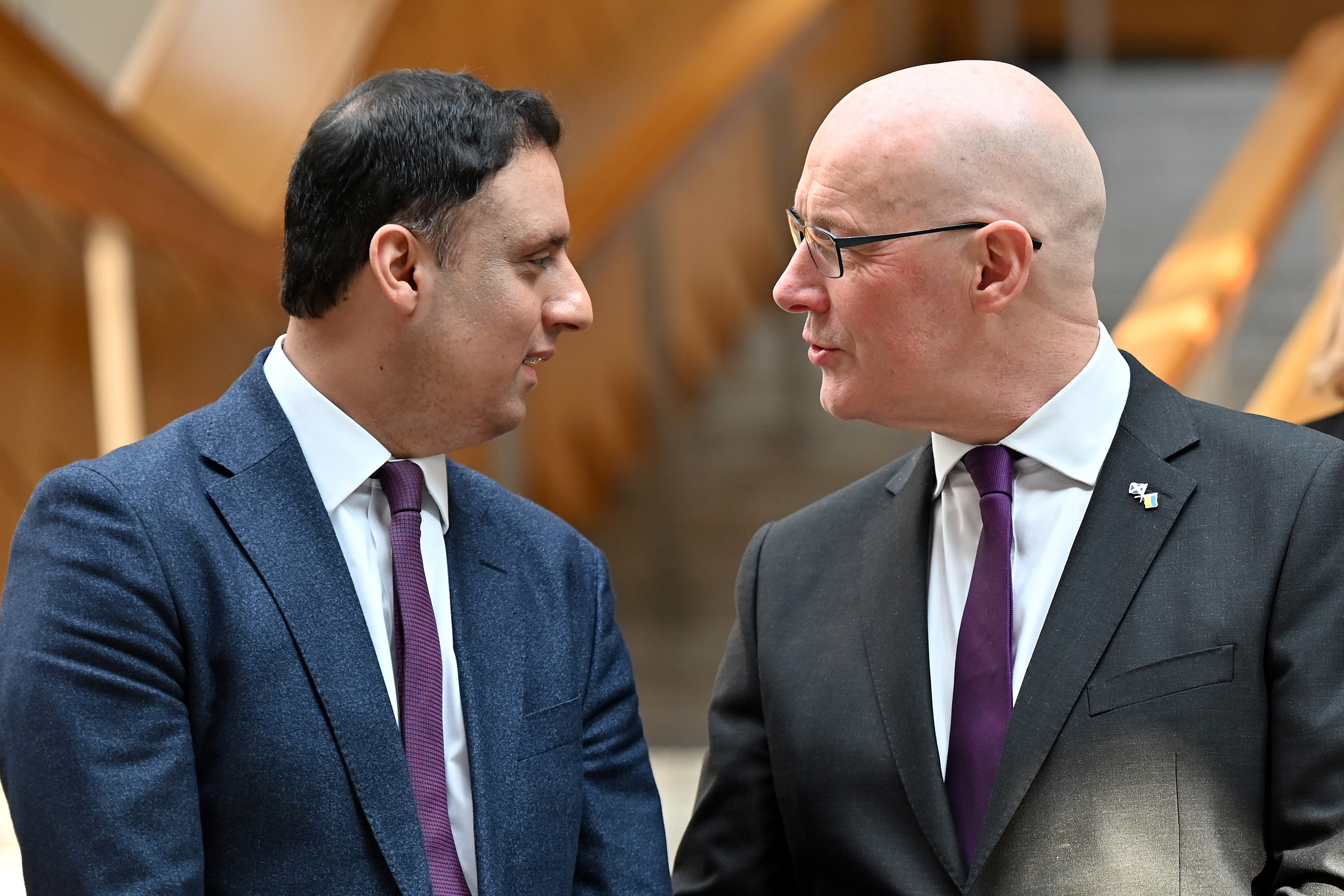
Anas Sarwar and Scottish Labour are some distance behind the SNP in the polls
KEN JACK/GETTY IMAGES
The case for the opposition
Scottish Labour, however, insists there remains a credible path to Anas Sarwar winning the keys to Bute House.
Much will depend, senior figures admit, on whether the party in London can heed a variation of Barack Obama’s famous advice. “Stop doing stupid shit”.
Economic realities dictate that the budget delivered by Reeves on November 26 will be hard, but Scottish figures believe it will be survivable. They expect voters to switch on to the Holyrood elections by February at the earliest.
Sir Keir Starmer and the chancellor have been left in little doubt about the stakes. Douglas Alexander, the new Scottish Secretary, spent two days with the prime minister during a recent trade mission to India. Sarwar, meanwhile, as well as being close to Starmer, has a direct line to Reeves after they became friends when they first entered parliament together in 2010.
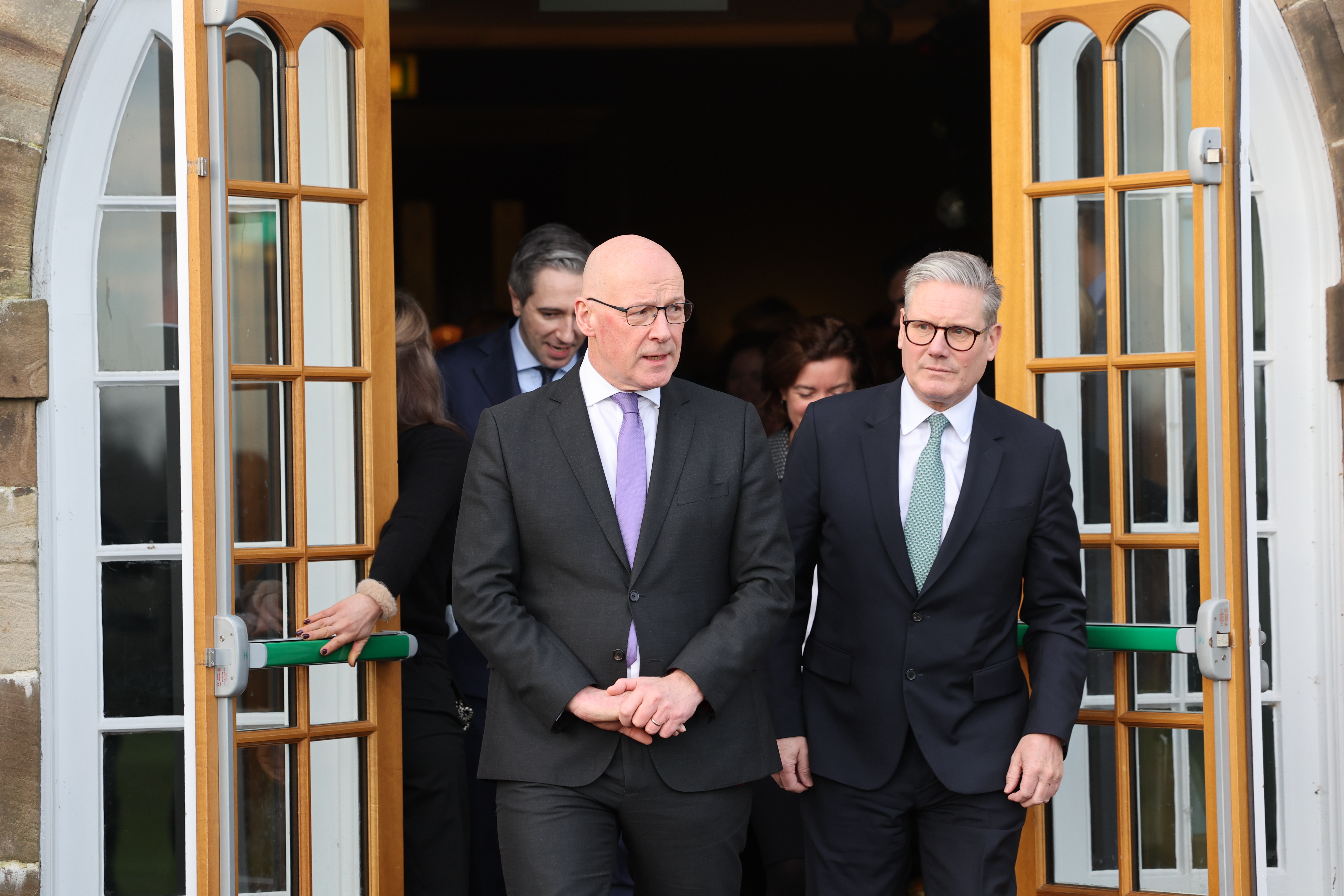
Swinney with Sir Keir Starmer
ROBERT PERRY/EPA
The hope is that the spending plans will be seen as a “Labour budget in difficult times”, accompanied by a convincing narrative about whose side the party is on, and without unforced errors that will outrage voters, such as the ill-fated cut to pensioners’ winter fuel payments.
And while the SNP sees the stability and seriousness of Swinney as a strength, Labour believe he can be turned into the nationalists’ Achilles’ heel.
Salmond and Nicola Sturgeon, Labour figures admit, were superb campaigners and media performers who were far better than their Scottish leaders. The first minister, they believe, is not in the same league as his predecessors, the hapless Yousaf aside.
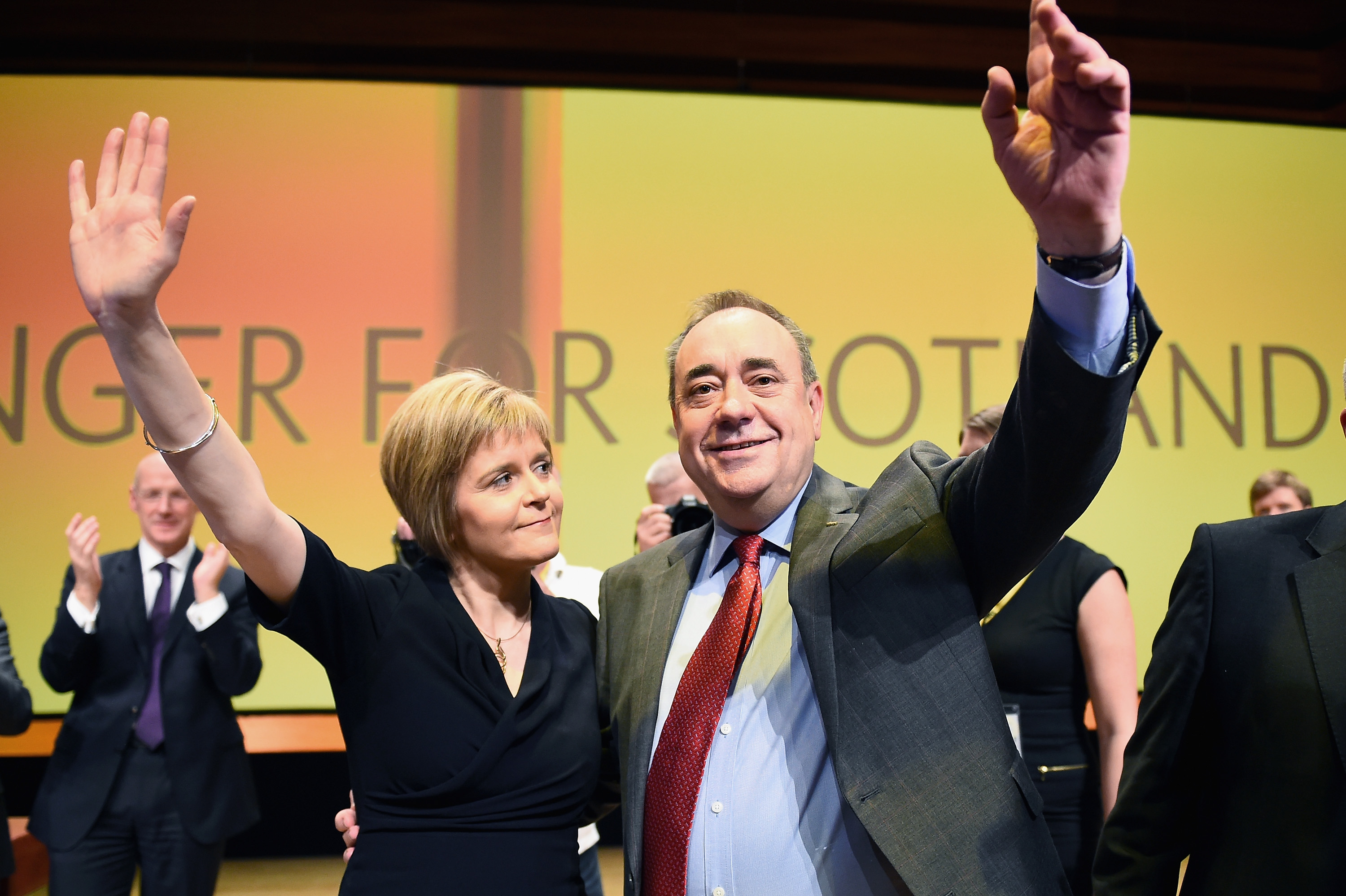
Nicola Sturgeon and Alex Salmond in 2014
JEFF J MITCHELL/GETTY IMAGES
The party plans to paint Swinney, a prominent figure in Scottish politics for three decades, as yesterday’s man, tired and out of ideas.
He can be tied to various SNP blunders over decades in power, strategists believe, and will compare unfavourably in a campaign with the more exuberant Sarwar, more than two decades younger.
The first minister’s interview performances around the conference, in which he struggled with detailed questions on the practicalities of independence and appeared content to say as little of interest as possible, bolstered a view inside Labour that Swinney is no election winner.
The first minister, after all, has led his party into four national and European elections over his two stints as leader. The SNP has comprehensively lost every single one.
Labour believe about 30 per cent of the electorate is solidly SNP. Among the remaining 70 per cent, there is a hope that anger at the nationalists’ running of public services means there is an opportunity to persuade enough voters — even reluctantly — to endorse Sarwar to usher in change. The level of anger at the nationalists for stewardship of services such as the NHS, Scottish Labour believes, is acute among the majority of voters outside of the pro-independence base.
This is essentially how the party pulled off a shock victory in the Hamilton by-election in June, when initially disastrous canvassing results gradually improved as target voters were slowly but surely talked around during the campaign, after being doorstepped by Labour activists.
By-elections bring hope
In actual votes, rather than opinion polls, there are also some optimistic signs for Labour
A council by-election in Ayr on Thursday was won by Wullie Hogg, a local businessman who stood as an independent, known for humorous social media videos about building fences and organising litter picks.
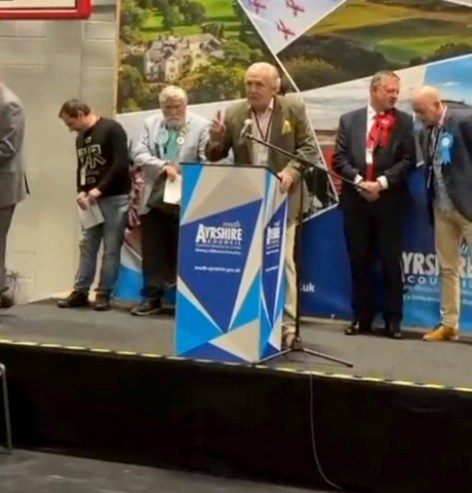
Wullie Hogg claimed victory in the Ayr by-election
@WSHFENCING1/INSTAGRAM
The proportion of first votes for the SNP was down more than 20 points, while Labour’s fell by less than four.
Sir John Curtice, the polling expert, said that although the SNP was polling around 12 points below the result Sturgeon achieved in 2021, it was “well-placed” to retain power.
Achieving Swinney’s stated aim of an outright majority, however, represented a “formidable” mountain to climb. “There is little doubt that most voters in Scotland, including many who voted for the SNP last year, are unhappy about the state of the economy and the health service,” Curtice said.
“However, those who voted Labour in the Westminster ballot appear to be blaming the UK government for the state of the country, while those who backed the SNP certainly do not seem to think it is Holyrood’s fault.
“Unfortunately for Anas Sarwar, his party is struggling to escape how voters feel about a UK Labour government that has become deeply unpopular.”
